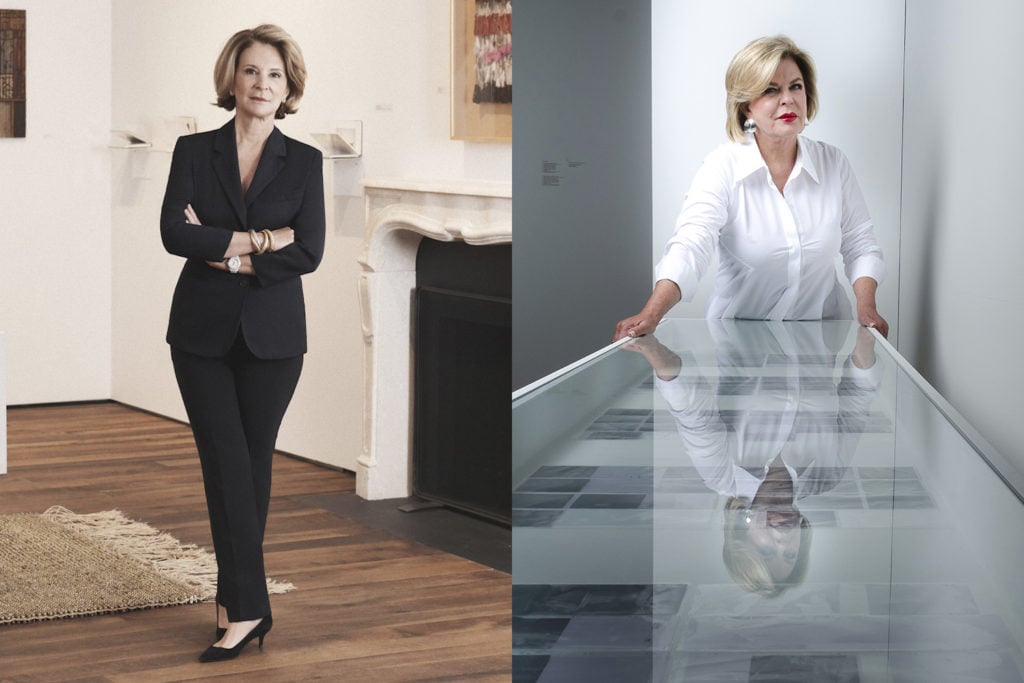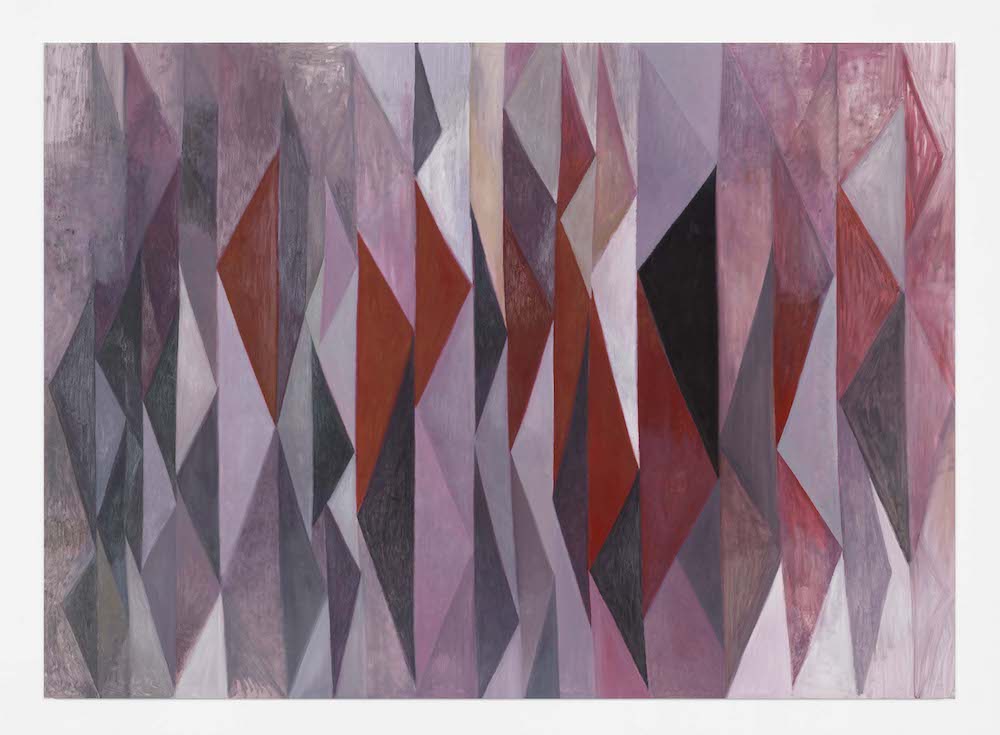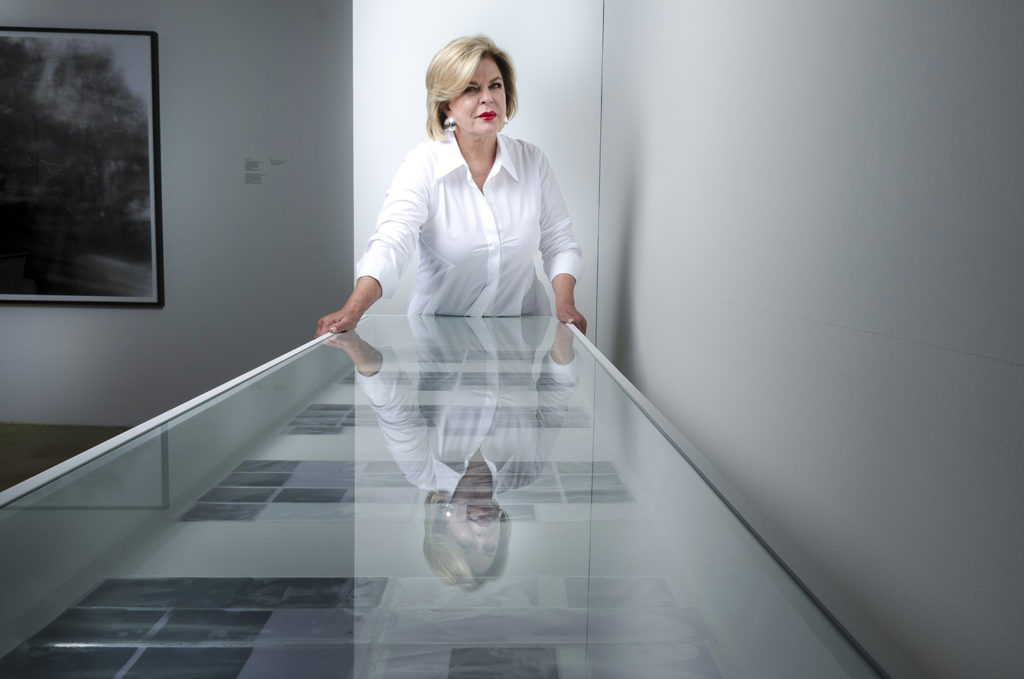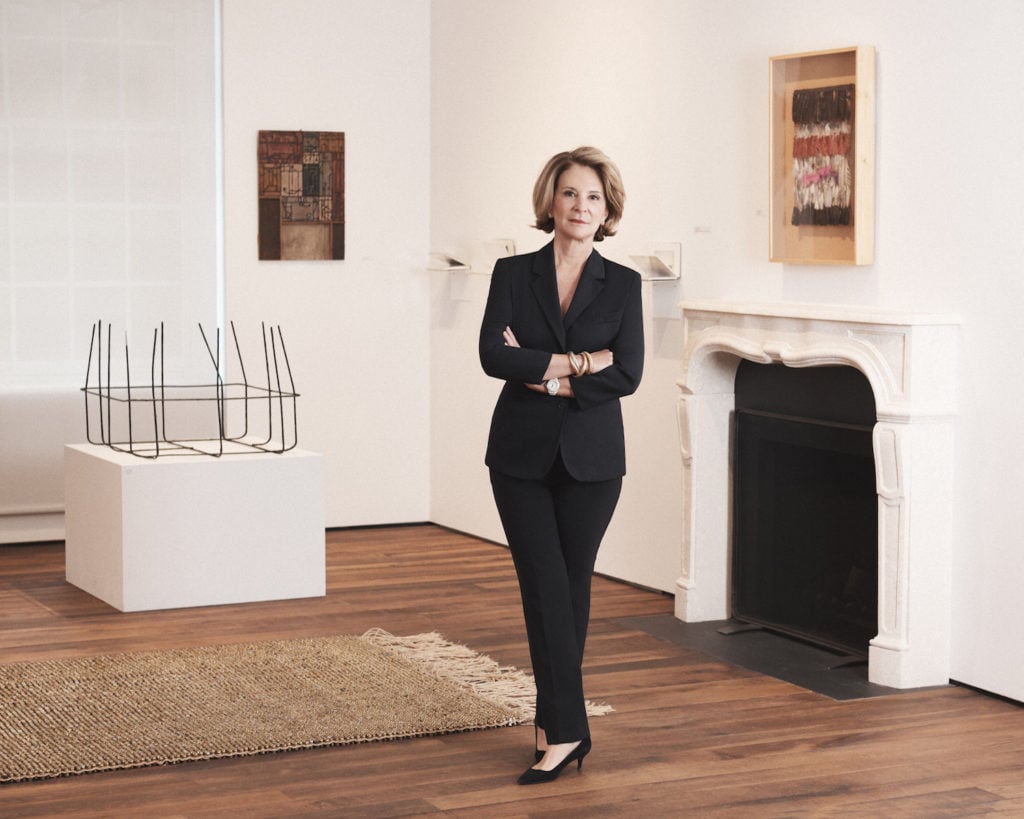Market
The Grandes Dames of Latin American Art Explain Its Growing Appeal
From ARCOMadrid to Donald Trump, Ella Fontanals-Cisneros and Estrellita Brodsky speak out.

From ARCOMadrid to Donald Trump, Ella Fontanals-Cisneros and Estrellita Brodsky speak out.

Since its inauguration in 1982, ARCOMadrid has always played a key role in the promotion and dissemination of Latin American art.
Until 2002, when Art Basel launched its Miami branch, ARCOMadrid was in fact the gateway between Latin America, the US, and Europe, with a host of international collectors gathering in Madrid each February.
The unstoppable rise of the Miami giant, combined with the major recession that hit Spain in 2008, resulted in ARCO going through several sluggish editions in the 2000s, but since Carlos Urroz took the helm in 2010, reshaping and rescaling the fair, ARCO has been steadily recovering its place on the international art stage.
Urroz’s embracing of ARCO’s significance for the Latin American art market has been particularly astute. This has been evident in his choice of Colombia (in 2015) and Argentina (this year) as guest countries, bringing a host of local galleries, artists, collectors, and curators not only to the fair, but also to the city at large, as part of the off-site program (Mexico and Brazil were invited in 2005 and 2008 respectively, before Urroz’s tenure).

Guillermo Kuitca, Untitled (2011). Photo Alex Delfanne, courtesy Hauser & Wirth.
“[ARCO Madrid and Miami Basel] are very different art fairs, in terms of the art calendar and geographically,” Susie Guzman, of Hauser & Wirth, which is participating in the fair for the first time since 2009, told artnet News.
“ARCO has a great program of collectors, curators, art critics. And another key question is that many collectors that we’ve met in Miami are now buying homes in Madrid, so they will go to both, with Madrid becoming their foot in Europe,” she added.
But, has ARCO managed to recover its relevance within the Latin American art landscape? And what shifts might await the Latin American art market, given the current political climate in the U.S. and across the globe?
artnet News discussed these questions with the two grand dames of Latin American art, the collectors and philanthropists Ella Fontanals-Cisneros, founder of the Miami-based Cisneros Fontanals Art Foundation, and Estrellita Brodsky.

Ella Fontanals-Cisneros. Photo Mauricio Donalli.
Ella Fontanals-Cisneros
Why do you think the art world is, finally, falling in love with Latin American art?
Latin American art has been a great discovery for many people, and it has been undervalued for a very long time, also in terms of prices. Suddenly, some of the best museums in the world realized that it was necessary that art from this region became part of their permanent collections. And people like me, who have supported and championed Latin American art internationally, we’ve made a small but necessary contribution.
What role does ARCO play in this?
ARCO always had a very strong presence of Latin American galleries, but there were a few years in which the galleries stopped coming. Carlos Urroz has done fantastic work, he’s traveled to all the Latin American countries and recovered those galleries. I find the idea of having a guest country very successful, because it attracts all the collectors based in those countries, making the fair much stronger. Today, ARCO is the fair that supports Latin American art, at least in Europe.
Do you think Miami Basel has stolen ARCO’s thunder?
I don’t think the two fairs are exactly competing. Miami Basel is one of the best fairs in the world, but its market is more global, it spans the Americas, Asia, Europe… Because of the rise in interest in Latin American art in museums and among collectors across the world, Miami Basel has accommodated that trend too. But ARCO has a different and key role when it comes to Europe, which needed a serious fair that gathered the Latin American galleries here.
What artists are you obsessed about at the moment?
I like my babies all the same [laughs], but in the last few years I have developed a special interest in the Cuban art scene, and I have acquired a lot of works by Cuban artists. Now, I’m starting to diversify my focus a bit more, starting even to collect U.S. artists.
How do you think that the presidency of Donald Trump will affect Latin American culture in the States, and the Latin American market?
I am very worried about Cuba, especially. I don’t see President Trump showing an interest in promoting culture, no matter from where. He wants to eliminate the Endowment for the Arts, for example, which is so necessary for American artists, and that’s very worrying.
Also, the U.S. art market has led the way in terms of embracing and investing in Latin American art, so not having its support anymore would definitely be a blow. There’s about 50 million Latin American people in the U.S., and it’s the fastest growing population there, and It’d be a big mistake to forget and not support the culture and roots of such a large group. I hope that won’t be the case, and that he has advisors and people around him who’d help him see that.

Estrellita Brodsky. Courtesy Estrellita Brodsky.
Estrellita Brodsky
How do you prefer to describe yourself: as a collector, philanthropist, or curator?
I am professionally an art historian and curator who collects and supports the arts. Having written my doctoral dissertation on Latin American artists living in post-World War II Paris, I became more familiarized with this and the earlier generation of artists from the region. It helped form my interest in collecting art from Latin America, a place to which I have personal family ties, and a deep belief in the wealth of its various cultures.
Can you tell me what projects and initiatives you are working on at the moment?
I am working on the possibility of having the current exhibition which I curated at the Pérez Art Museum Miami (PAMM), “Julio Le Parc: Form into Action,” travel to other U.S. museums. Through this first U.S. retrospective survey, I have sought to bring awareness to the important contributions made over the past six decades by Le Parc, overlooked until now in the U.S. Le Parc has been a pioneer in the fields of participatory art, kinetic art, and light installations. Driven by a solid utopian ethos, he continues to find new ways of engaging and empowering the viewer within a sociopolitical space through participation.
My next project is an exhibition to take place this Spring in my non-profit in Chelsea, ANOTHER SPACE. It will include works by Latin American artists such as Lygia Clark, Helio Oiticica, Alejandro Xul Solar, Joanquín Torres-García, and lesser-known Mexican groups such as feminist-focused artists Polvo de Gallina Negra. There will be a second part that is being developed by Gabriel Orozco in collaboration with Zanna Gilbert.
How do you explain the incredible rise in the interest in Latin American art in the last few years?
I think it has been long overdue but is now happening for a variety of reasons that unfolded over many years. These include the effort of many individuals committed to bringing works through acquisition groups into major institutions such as the Tate in London, and the MoMA and the Guggenheim in New York.
As an art historian, I believe there is a critical role played by dedicated curators who work inside these institutions to guide the institutional strategy in an intelligent and meaningful way. For that reason, I have endowed and supported Latin American Art curators at the Met, MoMA, and at the Tate, and also funded positions at smaller institutions such as El Museo del Barrio.
The acquisition and exhibition history at these various international museums has helped broaden awareness of numerous artists previously unknown outside of their local histories.
What role has ARCOMadrid played, and continues to play, for this market?
Fairs have played a significant role in giving Latin American art and galleries from the region an equal playing field. At ARCO, there is a possibility of seeing these artists’ work independently alongside other European and American colleagues. ARCO has historically been showing the art of Latin America and giving it more visibility, as it deserves.
Do Miami Basel and ARCOMadrid compete or complement each other?
Miami Basel is a much larger fair which makes the experience less personal than at ARCO. Miami Basel, too, has been a significant player in bringing attention to Latin America on a global level but the relationships at ARCO are more intimate between collector, work, galleries, and institutional exhibitions, and targeted to a more Latin- and European-based collector .
Do you think that the presidency of Donald Trump will affect in any way the appreciation of Latin American art and culture in the U.S., as well as its thriving art market?
This period in modern history is going to be, and already is, trying on many levels. Cultural openness and understanding make for a more peaceful environment by focusing on and respecting what makes us human. Isolationism is divisive and dangerous in demonizing the other.
Unfortunately this is a tendency happening on a wider global scale. I worry that in the U.S. we are facing a time that will be very destructive in terms of the lives of so many Latin people, inside and outside of the U.S. They have given important economic and social impetus in truly “making America great” and what we see now is demoralizing on many levels. It is the antithesis of what we have tried to achieve in broadening knowledge, rather than dumbing down all of America and the world, trying to respect all people rather than fear them.
In terms of the market, I am not sure, but I imagine that collectors will continue to collect regardless of the political climate and may see even more opportunities. But from an institutional perspective, the challenges will be great and need to be met with a more concerted dedicated effort to protect the arts from provincialism.